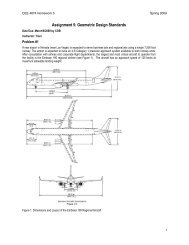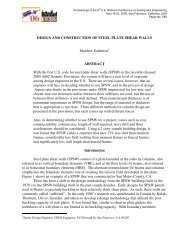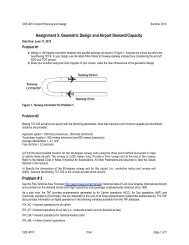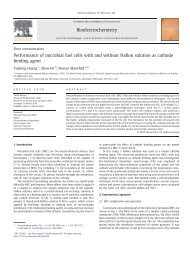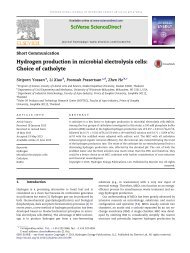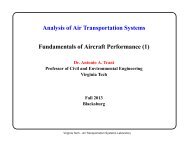Long-Term Performance of Liter-Scale Microbial Fuel Cells Treating ...
Long-Term Performance of Liter-Scale Microbial Fuel Cells Treating ...
Long-Term Performance of Liter-Scale Microbial Fuel Cells Treating ...
Create successful ePaper yourself
Turn your PDF publications into a flip-book with our unique Google optimized e-Paper software.
Environmental Science & TechnologyArticleFigure 2. Concentrations <strong>of</strong> suspended solids in the primary effluentsand the MFC anode effluents: (A) TSS and (B) VSS.Figure 1. Organic concentrations in the primary effluent and the MFCanode effluents: (A) TCOD, (B) SCOD, and (C) organicconcentrations in the catholyte.effluent from anaerobic treatment (MFC anode) can be furtherimproved through aerobic polishing. 19 This post-aerobictreatment was also important to the pH <strong>of</strong> the solution,because we observed that the anolyte pH varied between 4.0and 6.5 and the pH <strong>of</strong> the catholyte was about 7.5−8.5 (seeFigure S3 <strong>of</strong> the Supporting Information).Suspended solids (SS) in biological treatment are related tothe production <strong>of</strong> secondary sludge. In this study, wemonitored the concentrations <strong>of</strong> both TSS and VSS (Figure2) and found that the anodes <strong>of</strong> the MFCs reduced about 50%TSS and VSS. In the tank that collected the catholyte (whichpossibly acted as a sedimentation tank), the SS concentrationsbecame even lower at 14 ± 18 mg <strong>of</strong> TSS/L and 4 ± 10 mg <strong>of</strong>VSS/L (see Table S1 <strong>of</strong> the Supporting Information). Similarly,the MFC anodes decreased turbidity, another indicator <strong>of</strong> theparticle concentration in water, which was also further reducedin the catholyte (see Figure S4 <strong>of</strong> the Supporting Information).For comparison, the SS concentrations in the aeration tanks <strong>of</strong>the South Shore Water Reclamation Facility were 2214 ± 314mg <strong>of</strong> TSS/L and 1642 ± 242 mg <strong>of</strong> VSS/L. Although the postaerobicpolishing would accumulate sludge via aerobic activities(unfortunately, we did not quantify biosolid accumulation inthe tank collecting the catholyte), in general, the MFC + postaerobictreatment is expected to produce much less sludge thanan activated sludge process, because <strong>of</strong> significant reduction <strong>of</strong>organic compounds in the MFC anodes (65−70%, while thecathode removed another 20−25%). The low biomass yield inthe MFCs was also observed in the prior studies <strong>of</strong> laboratorysystems. 20,21 As a result, the use <strong>of</strong> a secondary clarifier will begreatly reduced, thereby saving a tremendous amount <strong>of</strong> energyand effort for sludge disposal.As expected, the anodes <strong>of</strong> the MFCs did not achieve anyobvious removal <strong>of</strong> nitrogen and phosphorus. The concentrations<strong>of</strong> ammonium, nitrite, and nitrate are shown in FiguresS5−S7 <strong>of</strong> the Supporting Information, respectively, and thephosphate concentration is shown in Figure S8 <strong>of</strong> theSupporting Information. However, the catholyte showed asignificantly lower concentration <strong>of</strong> ammonium (see Figure S5<strong>of</strong> the Supporting Information) and accumulation <strong>of</strong> nitrate(see Figure S7 <strong>of</strong> the Supporting Information), indicating thepresence <strong>of</strong> nitrification. We have investigated nitrogen removalin greater detail by linking a denitrifying MFC to the MFC-AC,which is introduced in the following section. The MFC anodesdid not achieve any significant removal <strong>of</strong> coliform bacteria,which were mainly affected by season and temperature (seeFigure S9 <strong>of</strong> the Supporting Information).Electricity Generation. Electric current was used as aparameter to monitor the long-term performance <strong>of</strong> electricitygeneration in the MFCs; power and energy were also analyzed.Both MFCs exhibited high current generation in the first 180days (Figure 3), likely because <strong>of</strong> high organic concentrations inthe primary effluent during that period (panels A and B <strong>of</strong>Figure 1). For most <strong>of</strong> the time, two tubes <strong>of</strong> a MFC (seeFigure S1 <strong>of</strong> the Supporting Information) were connected byone electric circuit, in which two anode carbon brushes wereconnected together as one anode and two cathodes were linkedas one cathode. Between days 57 and 104, we separated thecircuit into two to examine whether power and energyproduction could be higher; that is, each tube functioned asan independent MFC. The results did not support our idea;therefore, the two individual circuits were combined back toone after day 104. The large variation in current generation waspossibly because <strong>of</strong> the varied organic concentrations andconductivity in the primary effluent; the sharp decreasing lines,especially those that decreased to a level close to zero in a short4943dx.doi.org/10.1021/es400631r | Environ. Sci. Technol. 2013, 47, 4941−4948




